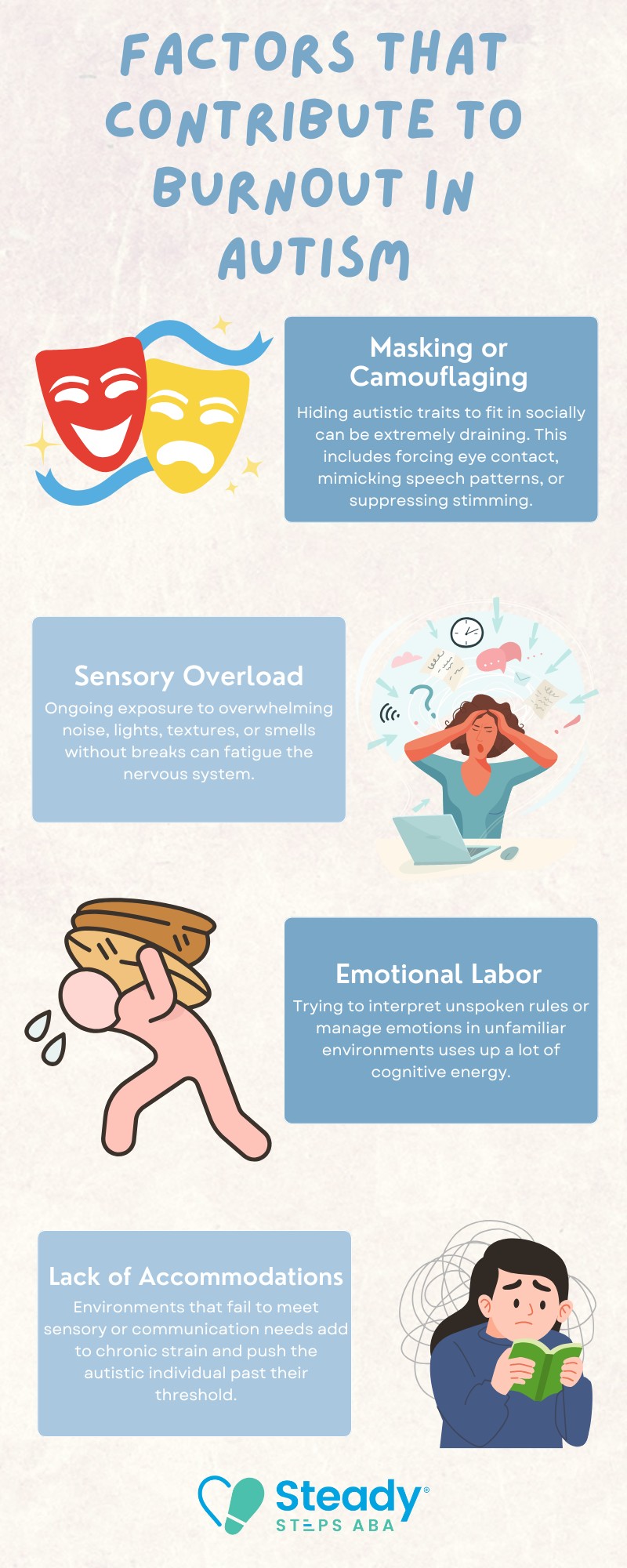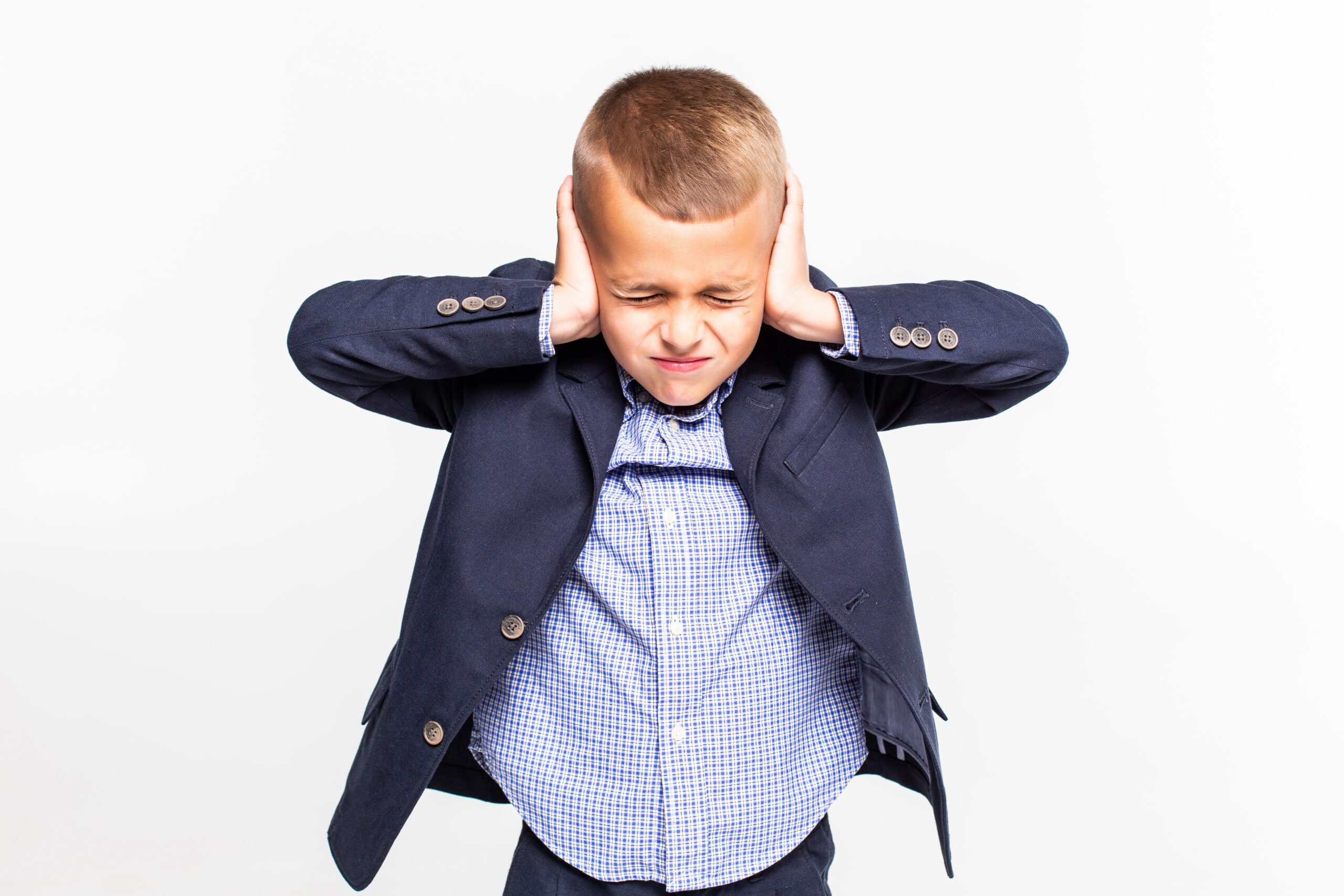Key Points:
- Autism burnout signs may include exhaustion, regression in skills, irritability, and increased sensory sensitivities.
- Burnout is not just tiredness—it results from prolonged masking, stress, and sensory overload.
- Identifying early signs allows parents and caregivers to adjust routines and prevent long-term impacts.
Recognizing burnout signs in autism is crucial for supporting both children and adults on the spectrum. Unlike typical stress or fatigue, autistic burnout is deeply rooted in neurological overwhelm. It’s the result of coping for too long in environments that demand constant adaptation, masking, and sensory tolerance.
In this guide, we’ll explore what autistic burnout is, its symptoms, what causes it, and how parents can respond early. Learning the warning signs can help prevent lasting distress and support healthy recovery.
What Are Burnout Signs in Autism?
Autism burnout signs include emotional exhaustion, difficulty performing basic tasks, sensory overload, withdrawal, and a noticeable drop in communication or daily functioning. These symptoms often build gradually but can result in shutdowns or significant changes in behavior.
Burnout affects everyone differently, but some signs are common across age groups. Autistic children may regress in skills they previously mastered, while adults might feel emotionally numb, drained, or detached from themselves.
What Causes Autistic Burnout?
Autistic burnout isn’t caused by laziness or unwillingness to try. Instead, it stems from long-term exposure to environments that demand constant social performance, sensory endurance, or emotional self-control. When recovery time is limited, exhaustion builds.
Key contributing factors include:

How Does Autistic Burnout Differ From Depression or Stress?
Autistic burnout is caused by prolonged sensory overload, masking, and unmet support needs, whereas depression and stress have different origins and symptoms. Burnout in autism involves identity exhaustion and a sharp decline in daily functioning.
Unlike depression, autistic burnout is not primarily rooted in mood imbalance—it stems from chronic efforts to “pass” as neurotypical and navigate overwhelming environments. While stress is usually short-term and situational, autistic burnout builds slowly and requires recovery time, environmental changes, and validation of the individual’s autistic needs. Proper distinction is essential for providing effective, tailored support.
What Are the Emotional and Physical Symptoms of Autistic Burnout?
Emotional and physical symptoms of autistic burnout include exhaustion, increased sensitivity, loss of skills, and emotional shutdown. These symptoms can severely affect daily functioning and are often misinterpreted as laziness or regression.
Autistic burnout may present as difficulty communicating, an inability to mask traits, heightened irritability, or withdrawal from social interaction. Physically, individuals may feel fatigued, experience sleep disturbances, or show signs of sensory overwhelm.
These symptoms usually emerge after extended periods of stress, masking, or navigating environments without proper accommodations. Recognizing these signs early is key to preventing long-term impact and supporting meaningful recovery.
What Does Recovery From Autistic Burnout Look Like?
Recovery is not about pushing through—it requires intentional rest and environmental changes. Parents may notice their child becoming more talkative, engaging in play again, or stimming more freely as signs of healing.
Stages of recovery often include:
1. Immediate Rest
Creating space for full rest is essential. This means pausing therapy, schoolwork, or social expectations and allowing the child time to simply exist without pressure, stimulation, or performance demands.
2. Sensory Reset
Support the nervous system by offering calming sensory inputs like soft textures, weighted blankets, or quiet lighting. Limit exposure to overwhelming stimuli while tuning into what brings comfort.
3. Routine Rebuilding
Once your child regains energy, slowly reintroduce familiar and enjoyable routines. Keep transitions gradual, with plenty of breaks, to avoid re-triggering the burnout response.
4. Skill Re-engagement
Gently support the return of functional or social skills. This may include self-care, requesting needs, or playing, but always follow the child’s readiness cues.
5. Emotional Safety
Foster an emotionally validating environment. Let your child know it’s okay to feel tired, frustrated, or quiet, and that those feelings are safe to express at home.
Healing from burnout is non-linear. Some days may look better than others, and that’s okay.
How Long Does Autistic Burnout Last?
Recovery depends on the individual’s age, support system, and level of environmental change. For some, burnout may last a few days; for others, it can stretch into weeks or longer if unaddressed.
Early recognition and consistent support are essential to prevent chronic fatigue or deeper emotional distress. It’s important to monitor energy levels, reduce social pressure, and rebuild slowly.
How Can Parents and Caregivers Help Prevent Burnout?
Prevention starts by tuning in to signs of rising stress and reducing unnecessary pressure. Rather than waiting for a meltdown or shutdown, caregivers can introduce routines and coping strategies that build resilience.
Here are proactive steps to reduce burnout risk:
1. Build in Recovery Time
Schedule daily moments where your child isn’t expected to socialize, perform tasks, or engage in stimulation-heavy activities. Quiet time restores energy and helps regulate emotional balance.
2. Encourage Self-Advocacy
Help your child understand their stress signals and express when they need a break, whether through speech, visuals, or gestures. This builds long-term emotional independence.
3. Honor Stimming and Sensory Needs
Allow and support safe stimming behaviors like rocking or hand-flapping. These actions are not problematic—they help children self-soothe and regulate internal stressors.
4. Limit Transitions and Unpredictability
Stick to consistent routines and give early warnings about changes. Visual schedules and countdown timers make transitions less jarring and more predictable.
5. Respect Boundaries
If your child resists an activity or appears overwhelmed, pause and reassess. Forcing interactions can raise stress levels and push them closer to burnout.

What Role Can ABA Therapy Play in Supporting Recovery?
ABA therapy can support recovery from autistic burnout by teaching coping strategies, reducing demands, and promoting emotional regulation through individualized interventions. It focuses on identifying stressors and helping the child regain skills at their own pace.
ABA also encourages flexibility, builds routines that reduce overwhelm, and reinforces positive behaviors without pressure. This kind of structured support can ease re-entry into daily life and help prevent future burnout episodes.
Foster Growth and Development With ABA Therapy
Autism burnout signs are not always easy to detect, but when families understand what to look for, they can take meaningful steps to prevent it. With the right care, rest, and strategies, burnout can be eased and future episodes minimized.
Steady Steps ABA offers ABA therapy in Maryland to help families address the emotional and behavioral changes that come with burnout. Our team provides compassionate, individualized care designed to meet your child where they are.
Contact us today to learn how our ABA therapy in Maryland can support your child through recovery and help them thrive again.






